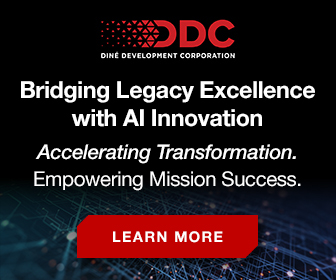Autonomous, AI-Ready Server Offers Zero Planned Downtime
IBM officially launched Power11, its next-generation AI-ready enterprise server platform designed to deliver zero planned downtime, on-chip AI acceleration, and seamless hybrid cloud deployment. Announced July 8, 2025, Power11 builds on IBM’s legacy of reliable infrastructure.
Power Servers vs Regular Servers
Before diving into Power11, let’s review power and regular servers. The key differences between IBM Power servers and regular (x86-based) servers boil down to architecture, performance, reliability, and use cases. See Table 1 for specifics. If you need ultra-reliable, high-performance infrastructure for critical apps and AI, go with a Power Server. If you need flexible, lower-cost general-purpose compute, x86 might do the job.
Table 1. IBM Power Servers vs. Regular (x86) Servers
| Category | IBM Power Servers | Regular (x86) Servers |
| Processor Architecture | IBM Power (RISC) – optimized for throughput and scalability | x86 (Intel/AMD, CISC) – widely used, general-purpose |
| Performance Focus | High-performance computing, large memory bandwidth, AI workloads | Moderate performance for standard applications |
| Reliability & Uptime | Enterprise-grade, designed for zero planned downtime, live updates | Prone to downtime without customization or clustering |
| Scalability | Scales vertically (more power in a single system) | Scales horizontally (add more servers to scale) |
| Operating Systems | IBM AIX, IBM i, Linux | Windows, Linux, various BSDs |
| AI Integration | Built-in AI accelerators (e.g., IBM Spyre), optimized for inferencing | Requires discrete GPUs for AI acceleration |
| Virtualization | Advanced built-in features like PowerVM, Live Partition Mobility | Standard virtualization via VMware, Hyper-V, KVM |
| Security | Embedded encryption, firmware integrity, Cyber Vault integration | Varies by vendor; generally less robust out of the box |
| Use Cases | SAP HANA, Oracle DB, AI, banking, healthcare, critical workloads | Web servers, VMs, file sharing, SMB apps |
| Typical Buyers | Large enterprises, governments, regulated industries | SMBs, cloud providers, general IT shops |
What’s New in Power11
Power11 was designed to empower enterprises across banking, healthcare, retail, government, and other industries. IBM automates the most significant pain points of running a server with advanced features like live patching, firmware integrity protection, and the new Spyre Accelerator chip. Here’s a quick summary of the newest features in Power11:
- Zero planned downtime for maintenance: Through advanced technologies like autonomous patching, live updates, and rolling upgrades, IT professionals are free to focus on higher-value work and innovation, saving up to 40% of their time.
- Less than one minute ransomware threat detection: Paired with the NIST Cybersecurity Framework, IBM Power Cyber Vault protects systems from “harvest-now, decrypt-later” and firmware integrity attacks.
- Seamless AI integration to transform business processes: Power11 delivers AI-ready infrastructure through the new IBM Spyre Accelerator chip, combined with Red Hat OpenShift AI and IBM watsonx Code Assistant.
- Efficient IT that saves time and money: With automated data collection, IT staff can save up to eight hours of error resolution. Power11’s Energy Efficient Mode also offers twice the performance per watt compared to x86 servers.
Power11 is a true hybrid platform that seamlessly integrates AI, whether an organization is on-prem or in the cloud. For the first time, Power11’s general availability will simultaneously include high-end, mid-range, and entry servers, and be available with IBM Power Virtual Server in IBM Cloud.
“IBM Power11 changes the game for enterprise computing. With Power11, clients can accelerate into the AI era with innovations tailored to their most pressing business needs. We are taking advantage of the full IBM stack to deliver hybrid cloud, AI, and automation capabilities.”
—Tom McPherson, GM, Power Systems at IBM.
Good Things Come in 3’s
Clients can expect innovations in three main areas:
1. Always-On IT with Zero Planned Downtime
IT teams can spend a lot of time managing maintenance, including planning for blocks of downtime that align with the business’s priorities. With Power11 processor-based servers, clients can expect zero planned downtime for system maintenance through new technologies such as autonomous patching and the automated movement of workloads with Live Partition Mobility [1].
2. Boost Outputs, Save Time and Energy
Power11 introduces the concept of Resource Groups in the firmware to maximize system utilization and efficiently increase workload performance. Power11 processor-based servers also have a new Energy Efficient mode to maximize efficiency further. This new smart energy option automatically schedules workloads to run at the lowest wattage possible to decrease energy costs and reduce environmental impact, helping meet corporate and federal sustainability objectives.
Using the new Energy Efficient mode, clients can get up to 28% better energy efficiency on Power11 processor-based servers.
Using the new Energy Efficient mode, clients can get up to 28% better energy efficiency on Power11 processor-based servers compared to Maximum Performance mode [2].
3. Flex Seamlessly for Business Needs
The Power11 portfolio provides the flexibility clients need to scale up and down to meet new business demands and opportunities where they are. Power11 processor-based servers will be available in the public cloud on Power Virtual Server the same day as the on-premise hardware, ensuring a consistent hybrid cloud user experience across public and private environments.
With the Power S1122, clients can reduce latency by up to 58% for AI inferencing compared to the Power S1022.
Power11 processor-based servers can run large and small language models on the same system holding data, reducing latency, and increasing inferencing performance without the added cost and complexity of GPUs. With the Power S1122, clients can reduce latency by up to 58% for AI inferencing compared to the Power S1022 [3].
Building the computing infrastructure for the AI era
Together with the IBM z17 mainframe and LinuxONE 5 server announced this spring, Power11 demonstrates how IBM continues to build innovative computing infrastructure that excels at running AI and other mission-critical workloads. Power11 helps organizations move confidently into the AI era.
IBM Power11 will be generally available July 25, 2025. The IBM Spyre™ Accelerator is expected to be available in Q4 2025. To learn more about Power11, visit IBM Power Servers or read the full press release.
Endnotes
[1] Based upon IBM internal testing of system upgrade scenarios; many (i.e. VIOS, hot plug adapters, I/O adapter FW, and concurrent system firmware updates) can be done in-place, while some (i.e. non-concurrent system FW and HW maintenance) may require Live Partition Mobility (LPM) support.
[2] Based upon IBM measurements of performance per watt on servers comparing Maximum Performance Mode to Energy-Efficient Mode while running compute-, disk-, and memory-based workloads on Power11 systems with fully configured sockets and memory as follows: E1180 with 4x10c / 64x64GB DDIMM, E1150 with 4x16c / 64x32GB DDIMM , S1124 with 2x16c / 32x32GB DDIMM , S1122 with 2x16c / 32x32GB DDIMM
[3] Based on IBM internal testing of batched processing and measuring time (minutes) per documents for Red Hat OpenShift Container Platform 4.16 worker nodes running Summarization with Granite3.3-2b-instruct input ~560 tokens, output 200 tokens, batch size=1. Results valid as of June 23, 2025 and conducted under laboratory conditions, individual results can vary based on workload size, use of storage subsystems and other conditions. Comparison is based on an IBM Power S1122 (2×30-core) with 48 worker cores and S1022 (2×20-core) with 32 worker cores.









0 Comments